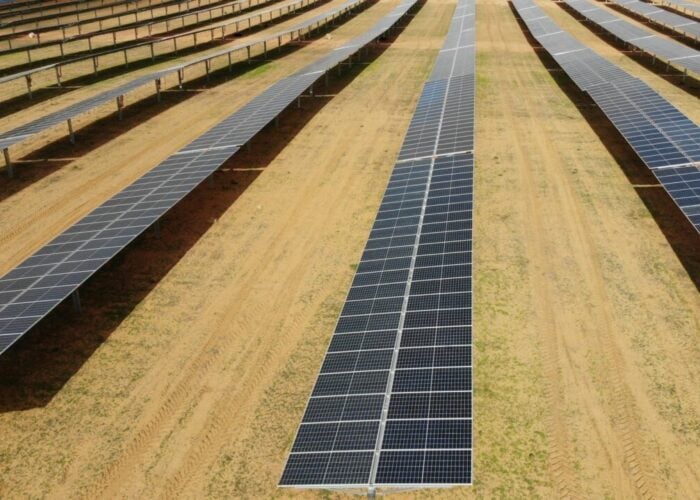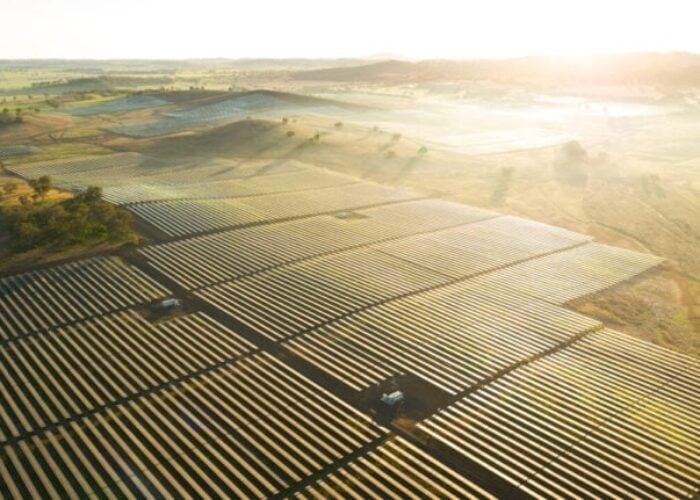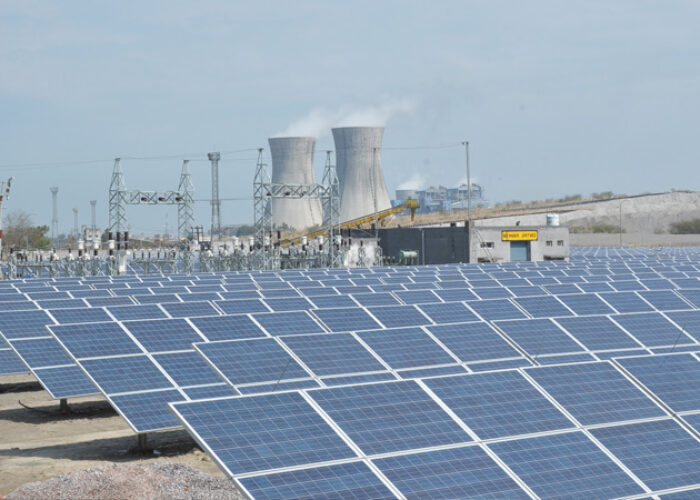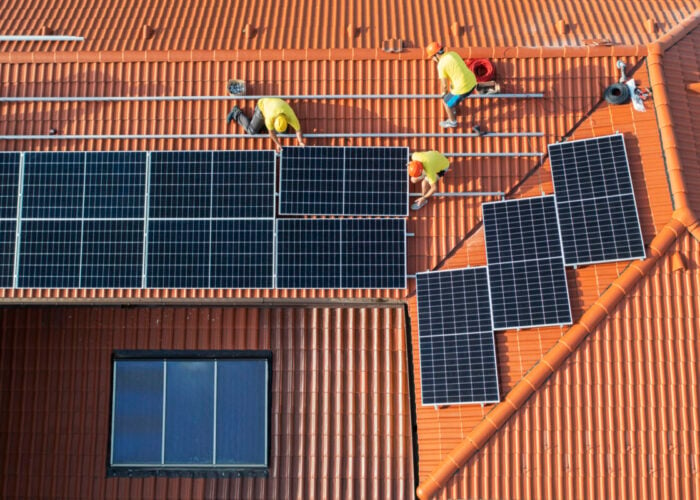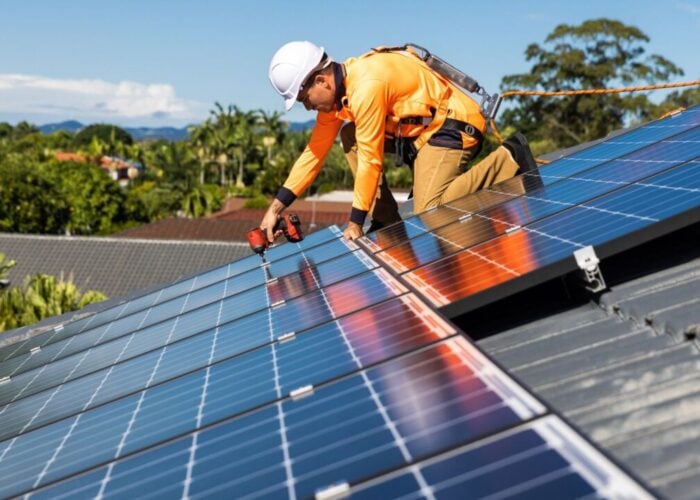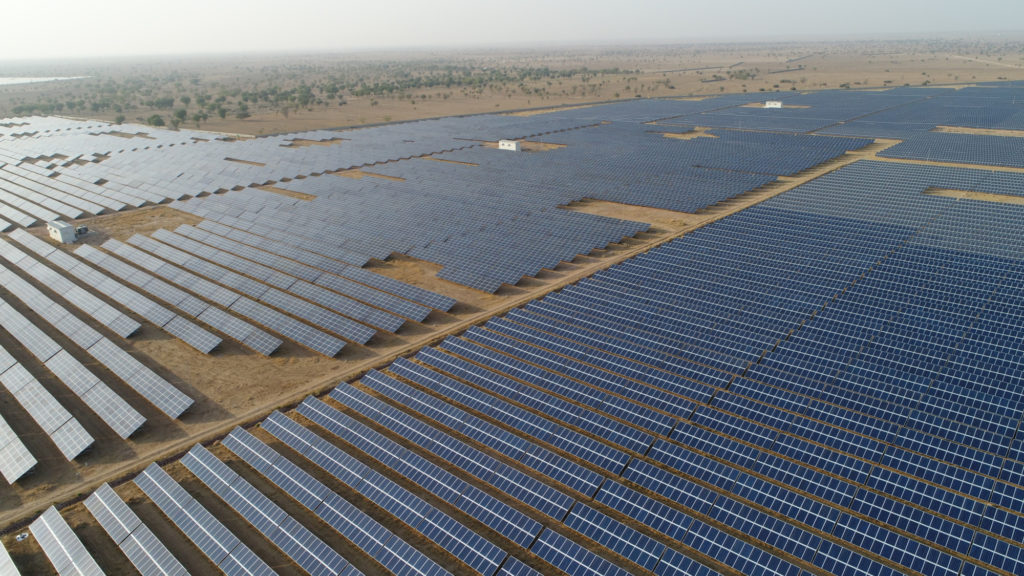
COVID-19-induced project delays impacted India’s solar power transition last year, but 2021 is still set to be a “landmark year” for the resource, according to new research.
India installed 2.6GW of new utility-scale solar power capacity between January and December last year, JMK Research & Analytics’ latest report on the country’s renewables market claims. This represents a 65% decline in growth compared to 2019.
Unlock unlimited access for 12 whole months of distinctive global analysis
Photovoltaics International is now included.
- Regular insight and analysis of the industry’s biggest developments
- In-depth interviews with the industry’s leading figures
- Unlimited digital access to the PV Tech Power journal catalogue
- Unlimited digital access to the Photovoltaics International journal catalogue
- Access to more than 1,000 technical papers
- Discounts on Solar Media’s portfolio of events, in-person and virtual
However, the research group believes that activity over the next 11 months will amount to a “landmark year” for India’s solar capacity, and projects that were not commissioned last year due to COVID-19 disruption will get the green light in 2021.
Around 9.7GW of utility-scale solar capacity is expected to be commissioned by December with a further 2GW of rooftop solar installations to be commissioned by the end of the year, up from the 1,172MW in 2020.
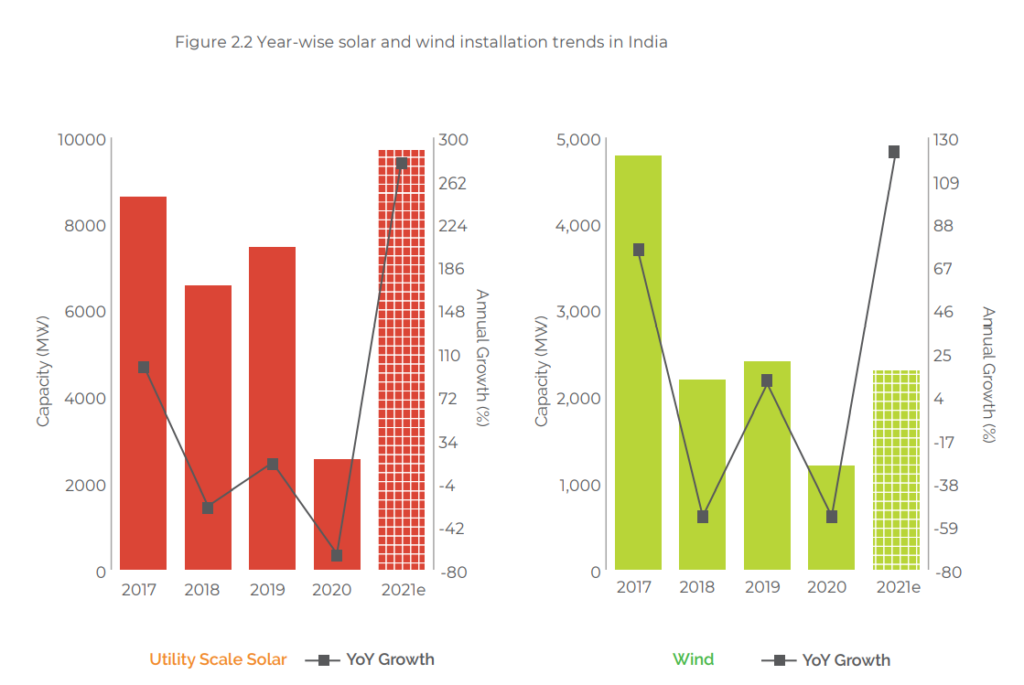
Prime Minister Narendra Modi said on Friday (19 February) that the government is “devoting great importance to solar energy” as part of India’s transition from fossil fuels to renewables. The country’s renewables capacity reached 91.2GW as of last December, JMK’s report said, with solar making up 41% of the clean energy mix. Modi has previously said that the country’s renewables capacity is expected to reach 220GW by 2022, exceeding its original 175GW target. However the country is set to miss its much vaunted ambition of installing 100GW of solar by 2022, with most forecasts expect the total figure to reach 65GW.
India currently has a development pipeline of solar, wind, and hydropower totalling 50GW capacity which is set to be commissioned over the next three years, and solar is set to see the fastest growth of any renewable energy source, the report said. Although wind power currently makes up 43% of the country’s renewable energy capacity, just 2.5GW of new wind projects are set to be commissioned this year, compared with 9.7GW of utility-scale solar.
Installations remained slow throughout 2020 due to widespread disruption brought on by the COVID-19 pandemic, the report said. However, growth picked up in the last three months of the year to reach 1,016MW added capacity. An earlier report from the research group found that more around 500MW was installed in December alone. Meanwhile, investment flow in the renewables sector reached US$1.27 billion in the fourth quarter of 2020, up 211% on Q3. JMK said installations are “likely to further pick up” in the first quarter of this year, with an estimate of 2.2GW of new solar capacity.
Local power producer Adani is the country’s leading power player, with an operational portfolio of 2.9GW capacity and roughly 11.8GW of further projects in its development pipeline. The company recently sold a 20% stake to European energy giant Total. Azure is set to become Adani’s closest rival in India’s solar market in the coming years, with roughly 5GW of capacity in its own development pipeline.
On the supply chain side, Sungrow remained India’s most prominent central inverter supplier last year, with 700MW of inverter shipments recorded in Q4 if 2020. Huawei was also the country’s leading string inverter provider last year, shipping more than 1.7GW of capacity during the same period. JinkoSolar and Longi were the country’s leading module suppliers, both shipping more than 600MW of modules to Indian power producers in the final three months of 2020. JinkoSolar alone contributed 25% of the country’s module shipments.
There is some dispute over how much funding the country will need from institutional investors to reach its targets. The Institute of Energy Economics and Financial Analysis, claims that US$300 billion would need to be set aside for wind and solar project development, US$50 billion on grid stabilising technologies such as battery energy storage, and US$150 billion on transmission and distribution initiatives. Another report from the International Energy Agency (IEA) has said the country’s clean energy sector may need US$1.4 trillion in additional investments to ensure sustainable growth.

